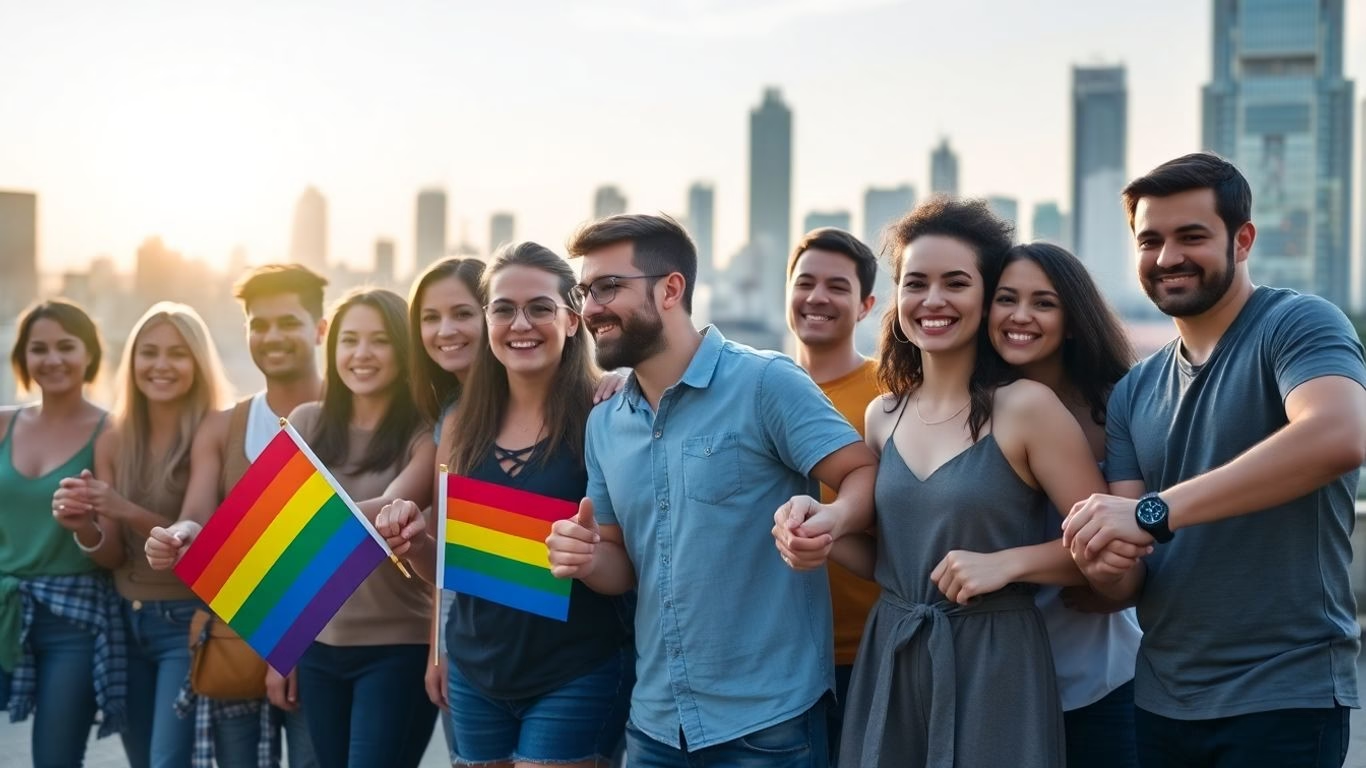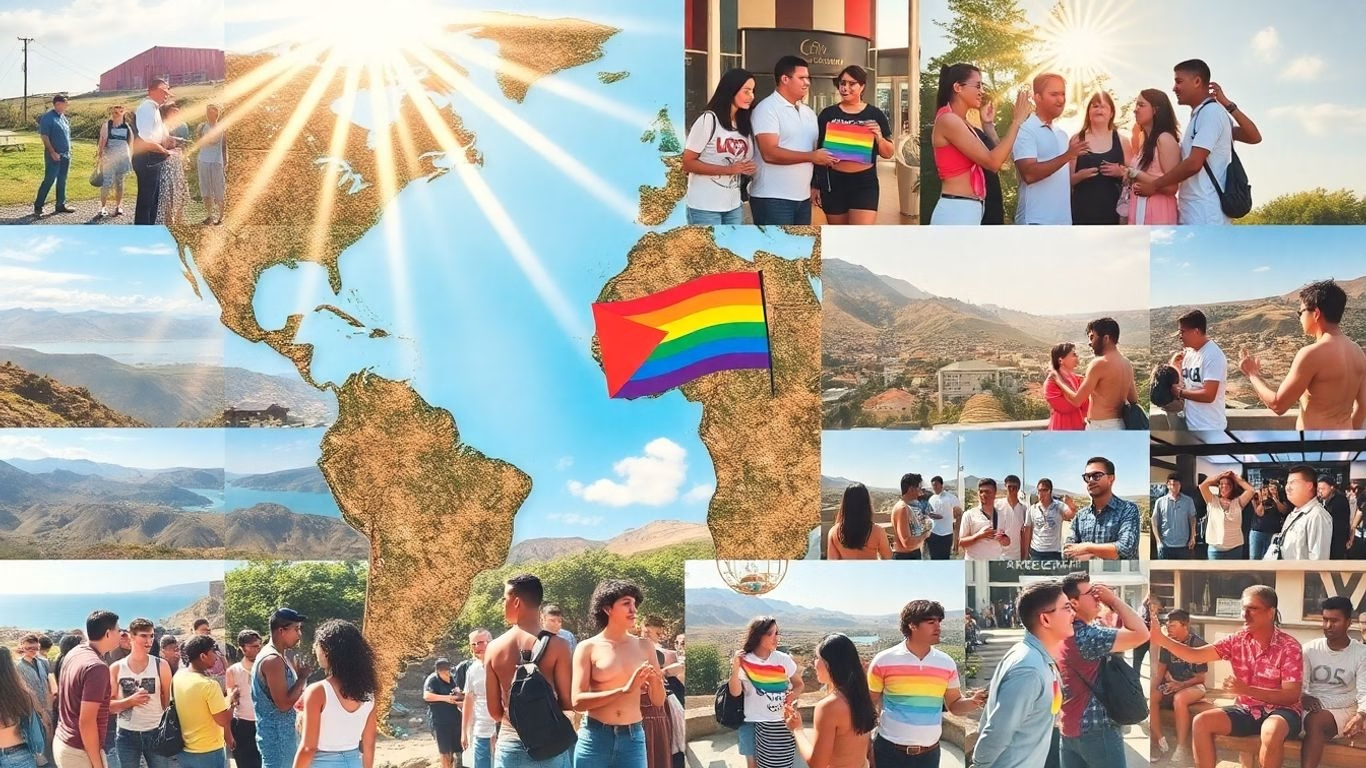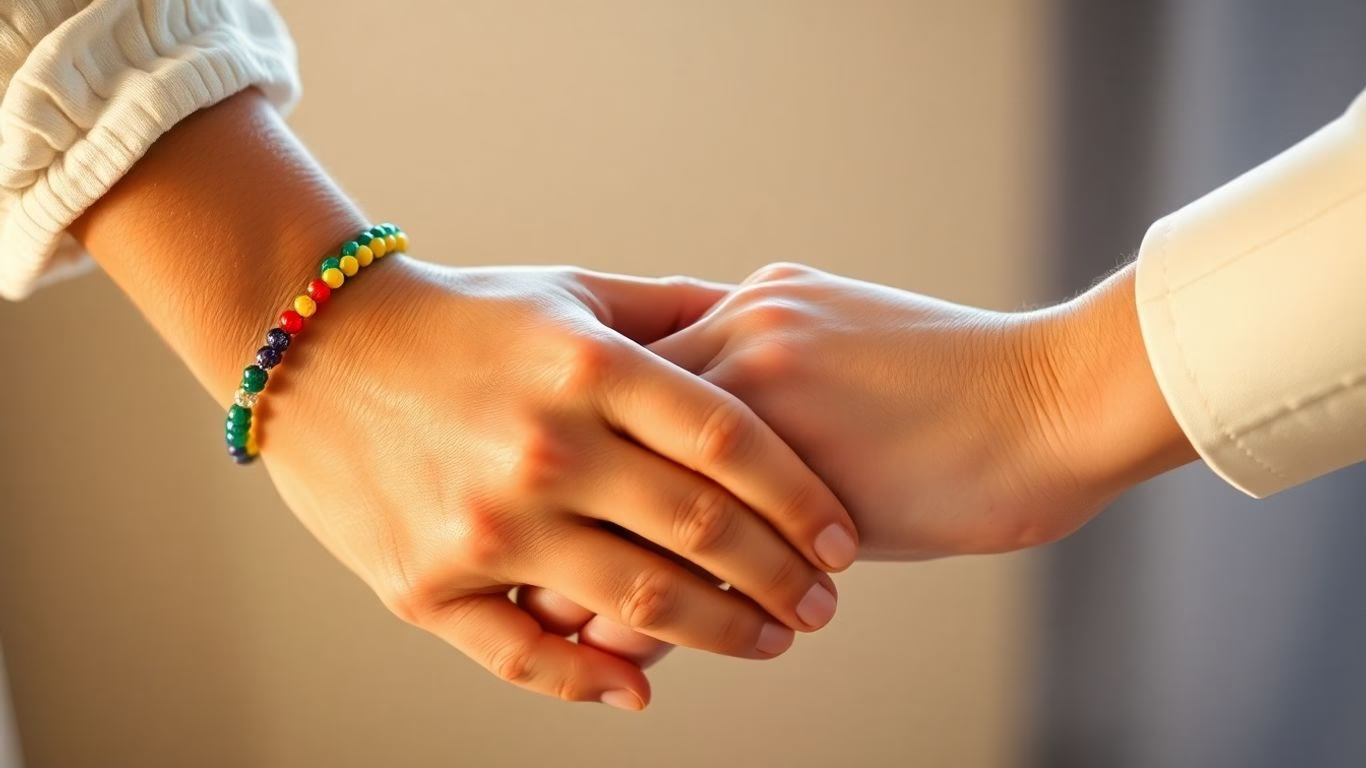So, you’ve decided to donate to LGBTQ+ causes. That’s awesome! But have you ever wondered exactly where that money goes? It’s not always super clear, right? This article is all about pulling back the curtain and showing you the real impact your support has. We’re going to look at the big picture of LGBTQ+ giving, break down where the money is actually being used, and talk about how donations can make the biggest difference. Think of it as a guide to understanding the impact of your LGBTQ+ support.
Key Takeaways
- In 2023, foundations gave about $209 million to LGBTQ+ causes in the U.S. That sounds like a lot, but it’s actually a small slice of all the money foundations give out.
- Funding for LGBTQ+ communities of color went down in 2023, though support for Latinx LGBTQ+ communities saw a big jump. Support for Black LGBTQ+ communities dropped quite a bit.
- While the Southeast region got the most funding in 2023, the way money is spread out across different areas isn’t always even.
- Most grants are short-term, usually only for a year. More long-term funding could help organizations do their work better and more steadily.
- A few big funders give most of the money. When they give less, it really changes the total amount of funding available for LGBTQ+ causes.
Understanding The Landscape Of LGBTQ+ Philanthropy

Total Funding Awarded To LGBTQ+ Causes
So, how much money are we actually talking about when it comes to supporting LGBTQ+ causes through donations? In 2023, U.S. foundations put out a total of $209,443,913 for domestic LGBTQ+ communities and related issues. That sounds like a lot, right? But when you break it down, it’s actually a pretty small piece of the overall pie. For every $100 given by foundations that year, only about 20 cents went specifically to LGBTQ+ causes. That’s down from 25 cents in 2022, which is a bit of a concerning trend. It shows how much we still have to go to make sure LGBTQ+ organizations get the steady support they need.
Key Funder Demographics
When we look at who’s giving this money, it’s not exactly a wide-open field. For years, a handful of major players have been doing most of the heavy lifting. In 2023, the top ten funders alone accounted for 46% of all the money given to LGBTQ+ causes. The top twenty funders? They gave 61%. That means the remaining 806 foundations we have data for only contributed 39% of the total. This concentration means that if one or two of these big funders change their minds or shift their priorities, it can really shake things up for the whole sector. Ideally, we’d see more funders stepping up so the landscape isn’t so dependent on just a few.
Trends In Grantmaking Over Time
Looking back, the way money flows to LGBTQ+ causes has seen some ups and downs. While the total amount given in 2023 was $209.4 million, it’s important to note that this was actually a decrease from 2022. A big reason for this dip was that those top funders gave significantly less money – a 26% drop from the previous year. This decrease from the major players wasn’t made up for by increases from other foundations. This kind of volatility, driven by shifts in just a few large contributions, can make it hard for LGBTQ+ organizations to plan for the future. It highlights the need for more consistent and broader support across the philanthropic community.
The landscape of LGBTQ+ philanthropy is still quite concentrated, with a few major donors providing a large portion of the funding. This reliance on a small number of funders can create instability, as shifts in their giving priorities can significantly impact the overall financial health of LGBTQ+ organizations and initiatives. Diversifying the base of support is key to building a more resilient and sustainable future for LGBTQ+ causes.
Where Your Support Makes A Difference: Key Focus Areas
It’s easy to wonder where all the money goes when you donate to LGBTQ+ causes. The truth is, your contributions are directed towards a variety of critical areas, each addressing specific needs within the community. Your support directly fuels efforts that uplift marginalized groups and fight for equality.
Funding For Communities Of Color
Support for LGBTQ+ individuals who are also people of color is a major priority. This includes funding for organizations that serve Black LGBTQ+ communities and other groups of color, recognizing the unique challenges they face due to intersecting identities. These funds help provide resources, safe spaces, and advocacy tailored to their experiences.
Support For Transgender, Gender Nonconforming, And Nonbinary Individuals
Significant attention is given to supporting transgender, gender nonconforming, and nonbinary (TGNCNB) individuals. This involves directing funds to groups that offer direct services, legal aid, and advocacy for the TGNCNB community. The goal is to address the specific discrimination and violence faced by these individuals and to promote their rights and well-being.
Addressing Underfunded Populations
Beyond the most visible groups, your donations also help reach populations that are often overlooked. This includes lesbians and queer women, intersex, two-spirit, bisexual, and asexual people. It also extends to people of color from AAPI, Indigenous, or Middle Eastern backgrounds, those living in U.S. territories, queer immigrants and refugees, and sex workers. These groups frequently struggle to secure adequate funding, making your contributions vital for their survival and progress.
Many organizations focus on providing general operating support rather than specific program funding. This approach respects the expertise of the groups receiving the money, allowing them the flexibility to use the funds where they are needed most. It helps them respond to immediate needs and operate more sustainably in the long run.
Here’s a look at some of the specific populations that benefit:
- Lesbians and queer women: Often face unique challenges and funding gaps.
- Intersex, Two-Spirit, Bisexual, and Asexual individuals: These groups require targeted support and visibility.
- Queer immigrants and refugees: Need assistance with legal services, housing, and cultural integration.
- Sex workers: Require advocacy for decriminalization and access to health and safety resources.
Geographic Distribution Of Donations

Regional Funding Trends
When we look at where the money goes across the United States, it’s clear that some regions get more support than others. In 2023, for the first time in a while, the Southeast region actually received the most funding, totaling about $36 million. That’s 17% of all the money given out that year. This was a pretty big jump from the year before, partly because of a fund called ‘Out in the South’ that gave out grants to groups working with LGBTQ folks in that area. It’s good news, especially since a lot of LGBTQ people live in the Southeast. Still, even with this increase, the money wasn’t spread out evenly among all the states in the region.
Local And State Level Support
Funding can be directed in a few ways: to specific cities or counties (local), to entire states, or across multiple states (regional). In 2023, we saw a bit of a shift. Money given to local and national causes went down compared to 2022. On the flip side, funding for state-level and regional initiatives actually went up. This means more money is being channeled through broader, multi-state efforts or directly to state-wide organizations.
Geographic Disparities In Funding
It’s really important to notice that not all areas get the same amount of help. Some places, especially those with fewer resources or less organized advocacy, might be getting left behind. This uneven spread means that the impact of donations can vary a lot depending on where the LGBTQ+ community is located. We need to pay attention to these differences to make sure support reaches everyone who needs it.
The way donations are distributed geographically highlights areas that might be overlooked. While some regions see significant increases in funding, others may continue to struggle with limited resources, creating a patchwork of support across the country.
Here’s a general look at how funding was distributed by region in 2023:
| Region | Percentage of Total Funding | Approximate Amount | Change from 2022 |
|---|---|---|---|
| Southeast | 17% | $36 million | +27% |
| Northeast | Data not specified | Data not specified | Data not specified |
| Midwest | Data not specified | Data not specified | Data not specified |
| Southwest | Data not specified | Data not specified | Data not specified |
| West | Data not specified | Data not specified | Data not specified |
| National | Data not specified | Data not specified | Data not specified |
Strategies For Maximizing Impact
So, how can we make sure the money we donate actually does the most good for the LGBTQ+ community? It’s not just about writing a check; it’s about thinking smarter about where that money goes. Smart funding means more effective support.
The Importance Of Multi-Year Grantmaking
Think about it: if an organization is constantly worried about where its next paycheck is coming from, it’s hard to plan for the long haul. Multi-year grants offer a lifeline. They give groups the stability to focus on their actual work, not just survival. This kind of consistent support helps build stronger organizations that can tackle bigger challenges.
- Predictable Funding: Allows for better long-term planning and program development.
- Reduced Overhead: Less time spent on constant fundraising means more resources for services.
- Staff Retention: Stable funding can help organizations keep talented staff, reducing turnover.
General Operating Support Versus Program Support
This is a big one. When you give money for a specific program, it’s like buying someone a specific tool. But what if they need a hammer one month and a screwdriver the next? General operating support is like giving them cash to buy whatever tools they need, when they need them. It respects the organization’s own knowledge of its needs. Trusting grantees with general operating funds allows them to be flexible and responsive.
Organizations often know best what they need to succeed. Sometimes that’s funding for a specific project, but other times it’s covering rent, utilities, or staff salaries. General operating support acknowledges this reality and provides the flexibility needed to adapt to changing circumstances and seize opportunities.
Prioritizing Regranting Initiatives
Some larger foundations or groups act as intermediaries, taking donations and then distributing them to smaller, local organizations. These ‘regranting’ initiatives are super important. They often have a better pulse on what’s happening on the ground in specific communities and can get funds to groups that might not be on the radar of bigger donors. It’s a way to spread the support wider and deeper. You can find out more about how foundations support LGBTQ+ causes by looking at grantmaker data.
Here’s a quick look at how this works:
- Local Expertise: Regrantors understand the unique needs of specific regions or communities.
- Capacity Building: They can provide not just funds but also training and support to smaller groups.
- Wider Reach: Helps funnel resources to grassroots organizations that might otherwise be overlooked.
The Role Of Major Funders
Concentration Of Funding Among Top Donors
When we look at where the money for LGBTQ+ causes comes from, it’s pretty clear that a small group of big players really makes a difference. For a long time, a handful of major foundations have been the main source of funding. In 2023, for instance, the top ten funders alone gave away 46% of all the money designated for LGBTQ+ issues. If you expand that to the top twenty, they accounted for 61% of the total. That means the remaining 806 foundations we have data for only contributed 39%. It’s a bit like a few big trees in a forest – they cast a pretty long shadow.
It’s also worth noting that these top funders actually gave less in 2023 compared to the year before. The top ten specifically reduced their giving by about $38.9 million, a 26% drop. This decrease from the biggest givers wasn’t really made up for by other foundations stepping in. This kind of concentration means that when these major funders shift their strategies or reduce their contributions, it can cause a lot of instability across the entire LGBTQ+ funding landscape. Ideally, we’d see a broader base of support so that changes at the top don’t have such a huge ripple effect.
Impact Of Shifts In Top Funder Contributions
Changes in how much the biggest funders give can really shake things up. For example, a 19% overall drop in LGBTQ+ funding from 2022 to 2023 was largely due to those top funders pulling back. This isn’t just about the numbers; it affects the organizations on the ground that rely on this support. When funding becomes unpredictable, it makes it harder for groups to plan long-term projects or even cover their basic operating costs. It highlights how important it is for the field to become less dependent on just a few sources. We’ve seen historical figures like Marsha P. Johnson and Bayard Rustin who were instrumental in civil rights movements, and their work, like the work of many organizations today, requires consistent support to achieve lasting change.
Encouraging Broader Philanthropic Engagement
So, what can be done to make things more stable? One idea is to encourage more foundations to get involved. This means not just giving money, but also thinking about how that money is given. For instance, providing general operating support, which allows organizations flexibility to use funds where they’re needed most, is often more helpful than restricted program support. Multi-year grants are also a big plus, as they offer stability and reduce the burden on staff time spent on constant fundraising. Encouraging foundations to sign pledges, like the Grantmakers United for Trans Communities (GUTC) Pledge, can also signal solidarity and encourage action. Ultimately, a wider and more diverse group of funders, giving in more flexible ways, would create a much stronger and more resilient ecosystem for LGBTQ+ causes.
The total amount awarded to LGBTQ+ causes in 2023 was $209.4 million. While this sounds like a lot, it’s a very small slice of all foundation funding in the U.S. For every $100 given by foundations that year, only about 20 cents went directly to LGBTQ+ communities. This is actually less than the 25 cents per $100 given in 2022, showing a concerning trend of decreased proportional support.
Here’s a look at the concentration of funding:
| Funder Group | Percentage of Total LGBTQ+ Funding (2023) |
|---|---|
| Top 10 Funders | 46% |
| Top 20 Funders | 61% |
| All Other Funders | 39% |
This data really underscores the need for more foundations to step up and contribute to the LGBTQ+ movement. It’s not just about the dollar amount, but about diversifying the sources of support to build a more sustainable future for the organizations doing this vital work. You can find more details on LGBTQ+ philanthropy trends and data.
How Organizations Utilize Your Contributions
So, you’ve sent your donation off, and now you’re probably wondering what happens next. It’s a fair question! Organizations that support the LGBTQ+ community use donations in a bunch of different ways, and it’s not always just one thing. Think of it like a toolkit – different tools for different jobs.
Responding To Urgent Needs
Sometimes, things pop up that need immediate attention. This could be anything from helping folks who need to leave a dangerous situation quickly, to supporting people who have been unfairly locked up, or even just keeping a vital community center or shelter open when its funding is about to run out. These rapid-response efforts are often funded by donations that come in regularly, like monthly gifts. It means organizations can act fast when a crisis hits, without having to scramble for cash at the last minute. It’s about being ready to help when it matters most.
Supporting Advocacy And Justice Efforts
A big chunk of the work involves pushing for change. This means funding campaigns that fight for equal rights, working to change unfair laws, and speaking out against discrimination. It also includes supporting groups that are doing the hard work on the ground, organizing communities and advocating for justice. This kind of work often requires steady funding over time to build momentum and see real results. It’s the long game of making society more fair and inclusive for everyone.
Ensuring Operational Stability For Grantees
Many organizations that receive donations also give grants to smaller groups. When donors provide general operating support – meaning the money can be used for anything the organization needs – it makes a huge difference. Instead of being tied to a specific project, these funds can cover rent, salaries, utilities, and other day-to-day costs. This stability allows smaller groups to focus on their mission without constantly worrying about keeping the lights on. It also means they can be more flexible and adapt to changing needs in their communities. Think of it as giving them the breathing room they need to do their best work.
Looking Ahead: Your Support Matters
So, where does all that support go? It’s clear that donations are making a real difference, funding vital work for LGBTQ+ communities across the country. From helping those in immediate danger to pushing for long-term change, every bit counts. While the numbers show a complex picture, with some areas seeing increases and others needing more attention, the core message remains the same: your generosity fuels the fight for equality. It’s not just about the dollars and cents; it’s about showing up for a community that needs us. Keep an eye on these efforts, and know that your continued support is what makes this work possible.
Frequently Asked Questions
How much money goes to LGBTQ+ causes each year?
In 2023, foundations in the U.S. gave about $209 million to support LGBTQ+ people and causes. This might sound like a lot, but it’s actually a small piece of all the money given by foundations. For every $100 given by foundations, only about 20 cents went to LGBTQ+ causes.
Are donations spread out evenly, or do some groups get more?
Funding isn’t spread out equally. A small number of big donors give most of the money. In 2023, the top 10 biggest donors gave almost half of all the money. This means if these big donors give less one year, it can really affect the total amount of support.
Does funding reach LGBTQ+ people of color?
Funding for LGBTQ+ people of color has actually gone down recently. In 2023, it was less than 40% of all the money given. While funding for Latinx LGBTQ+ people went up a lot, the total amount for Black LGBTQ+ communities dropped significantly.
What about support for transgender, gender nonconforming, and nonbinary individuals?
Support for transgender, gender nonconforming, and nonbinary (TGNCNBi) individuals also decreased in 2023. They received about 17% of the total funding, which is less than the year before. Most of the money given goes to the general LGBTQ+ community.
How is the money used by the organizations that receive it?
Organizations use donations for many important things. This includes helping people in urgent need, like refugees or those facing danger. They also use the money to fight for justice, support advocacy efforts, and simply keep their doors open so they can continue their work.
What’s the best way to ensure my donation makes a big difference?
To make the biggest impact, it helps if donations are given regularly over several years. This helps organizations plan better and cover their regular costs, not just specific projects. Giving general operating support, which means the organization can decide how best to use the money, is also very effective.





Leave a Reply